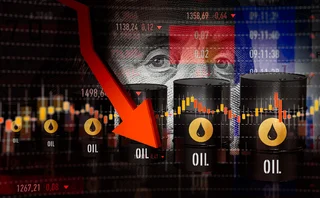Innovation of the year, Asia: Thomson Reuters
Energy Risk Asia Awards, 2017: Data provider brings price transparency to Asian oil markets

Over the past year, data provider Thomson Reuters has engaged with market participants to build a price discovery assessment to support the price of Asian crude and oil product curves. In building the curve, the firm hopes to bring transparency to what has been widely recognised as an opaque market, particularly for end-users who are not trading in the markets on a regular basis, and risk management teams who need a price-referencing tool.
“We don’t want to sell it to the people who know where the market is, we want to sell it to the people who don’t see a clear enough picture and lose money when the prices go up,” says Siva Balasupramaniam, manager, global oil price assessment, Thomson Reuters Oil Research. “There should be a more transparent market, where people know what they are getting into.”
The concept of rolling out proprietary Asian oil and product swap forward curves stemmed from Balasupramaniam’s observation that the competition for pricing was mainly between broking houses. As they were perceived to have the most insight into the market, combining their data with that of data aggregators was the accepted route for anyone producing oil swaps pricing.
“Having been in the market, I know that is not correct,” he says. “I know exactly how firms produce the curves that are sold to Thomson Reuters. It is not based on any calculations, it is based on certain assumptions of market knowledge and what trades. If everything was mathematical, the curve would be mathematical, and we wouldn’t have a problem at all.”
As a result, firms trading oil were keen to get hold of a tool that would provide price transparency. That transparency would also broaden market participation.
Initially, Balasupramaniam said he expected to meet resistance, but he found the firm was able to see the benefits of the proposed model very clearly.
“The team I had to get on my side was research and development, in Paris,” he says. “To change how things were done, I thought this was going to be difficult. However, they were the first people on my side and once they were on, thing were a lot easier.”
As we worked on the project, it was clear to everyone the numbers of users kept getting better and we realised we were working on something very big
Siva Balasupramaniam, Thomson Reuters
So the firm built the Asia Oil Swaps Forward Curve. It assesses observable bids, offers and trades in the market and includes time-stamps for greater transparency. The curve covers fuel oil, middle distillates, naphtha and crude, publishing five times a day, of which three are recorded settlements at 04.30 GMT, 08.30 GMT – benchmarked as Asia closes – and 11.30 GMT.
This was partly driven by Balasupramaniam. “I have project-managed all the development work for five years straight, correcting issues with data on every Reuters Instrument Code (RIC) format [a proprietary ticker-like code the firm uses to identify financial instruments and indexes]. All of our curves reach to 36 months and we are looking to extend to 48 months, at which point I will be looking after 120,000 RICS.”
To keep the benchmark in line, Thomson Reuters has also built a team of experienced assessors with market experience that ‘follow the sun’. They are located in Houston, London and Singapore, to ensure local market overlay and an assessment adjusting for 24 hours a day, five days a week if required. To add even more value, there are daily reports for each trading region.
The curves publish fixed-price values and related spreads for inter-month, inter-grade and inter-region contracts as well as crude to product spreads. The data is provided via Elektron, Thomson Reuters’ platform for data distribution across asset classes. By integrating that data with the research and content used in capital markets, the firm can provide investment and trading businesses with a platform that supports risk managers, traders and marketers to help them better manage trading operations and portfolio risk across the industry. Analytics on Elektron, fuelled by these forward curves, provides participants with insights into structural market changes.
“As we worked on the project, it was clear to everyone the numbers of users kept getting better and we realised we were working on something very big,” says Balasupramaniam. “From the point of view that the business had been shrinking, it has grown so big now that I think we are the largest market data provider for energy and commodities.”
More on Oil & refined products
Energy Risk Europe Leaders’ Network: geopolitical risk
Energy Risk’s European Leaders’ Network had its first meeting in November to discuss the risks posed to energy firms by recent geopolitical developments
US shutdown leaves commodity traders without key data
Commodity traders are ‘flying blind’ without Commitment of Traders reports
Energy Risk at 30: Learning from the past
Energy Risk looks back at the seminal events and developments that have shaped today’s energy markets
Why Iran tensions failed to rattle markets
Despite initial fears, traders say risks were signposted and investors had deleveraged after April
Oil and products house of the year: Macquarie Group
Energy Risk Awards: Bank pioneers innovative deals in illiquid markets, taking on esoteric risk
Podcast: should negative oil prices be allowed?
Did negative oil prices signify the market was operating effectively, or that something was wrong?
Podcast: the future of retail investment in oil
Will negative prices and big losses curb retail investors’ appetite for oil futures over the longer term?
Podcast: Kaminski and Ronn on negative oil and options pricing
The market is gravitating to the Bachelier model as an alternative to Black 76







